Japanese daikon radish harvest time (The Japanese daikon grown from seeds is now at maturity time)
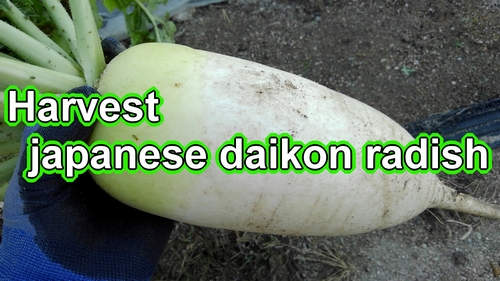
Growing japanese daikon radish in field crop cultivation. Daikon radish planted and prepared in August is now ready to harvest. (Daikon radish maturity time.)
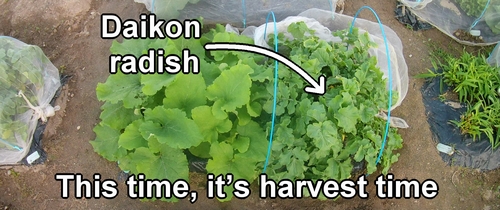
Summary of japanese daikon radish cultivation:From soil preparation to planting and thinning daikon
When do you start growing daikon radish? Japanese daikon radish growing started in August. Soil was prepared in mid-August, and daikon seeds were planted in late August.
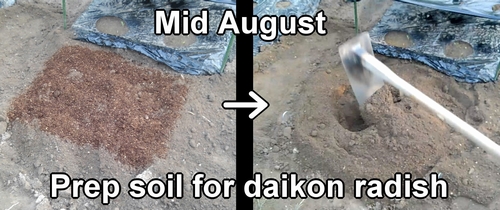
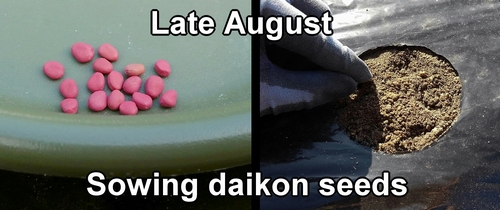

Growing daikon radish needs good soil preparation. Daikon grows downward, so dig the soil deep. Mix the fertilizer well with the soil to avoid unevenness.
Sow japanese daikon radish seeds by seeding in hill. Seeding in hill means planting 3 to 5 seeds together in one hole. This method is used not only for daikon radish but also for growing spinach and leaf lettuce.
Thinning daikon starts right after sprouting. First, when 4 seedlings appear, thin one out to leave 3 plants. After that, thin one plant every 7–10 days. In the end, keep only the best-growing daikon radish.
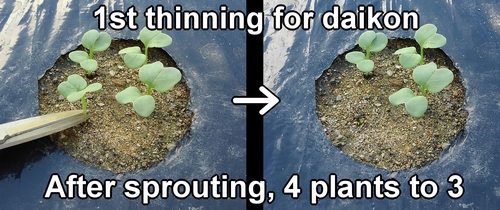

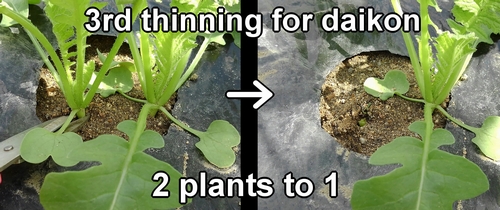
If you want to grow big daikon radish, thinning is a must. If you skip thinning because it feels wasteful, all the daikon will end up small. To harvest nice, big daikon radish, don’t miss the right time to thin.
Summary of japanese daikon radish cultivation:Taking care of japanese daikon after thinning until harvest
About two weeks after the third thinning, it is now early October. The tops of the daikon are just starting to show above the soil. They are about 3cm (1.2 inches) wide, so harvest time is still far away.
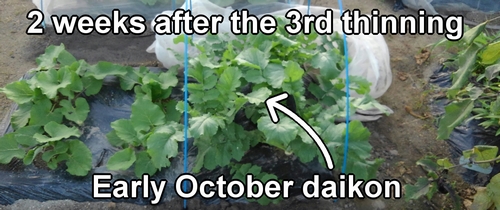

There are some aphids on the daikon radish leaves, but they can be removed by hand, so it seems fine. Overall, the daikon plants are growing well.

2 more weeks passed (around mid-October). It has been about four weeks since the third thinning of the japanese daikon radish. The best-growing daikon has a stem thickness of about 6cm (2.3 inches). The other daikons are also growing thicker.

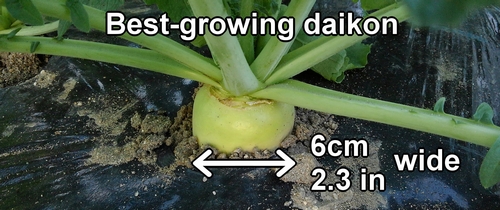

The japanese daikon are growing well, but since they are grown without pesticides, aphids are increasing as they grow. I think this can’t be helped with pesticide-free farming, but I keep removing them. Aphids can carry virus diseases, which worries me. For now, my daikon seem fine.


The daikon I grew from seeds is ready to harvest (Japanese daikon radish harvest time)
Early November, the daikon radish is ready to harvest. The best time to harvest daikon radish is when its diameter is 10–12cm (3.9-4.7 inches). You can leave it in the field for a short time, but it’s better to pull it out during the right harvest time.

If you leave a daikon radish in the ground too long after the harvest time, it may become “hollow" (the inside becomes empty). Daikon with hollows doesn’t taste very good, so it’s best to harvest on time. If you wait too long to harvest, the daikon may crack, so be careful.
How do you harvest daikon radish? The method to harvest daikon radish is to pull up the whole plant. Hold the base firmly and pull it out.
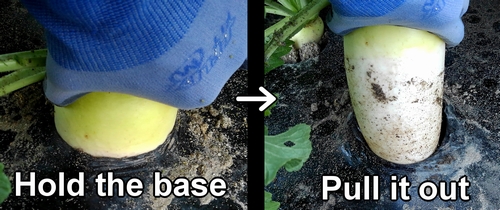
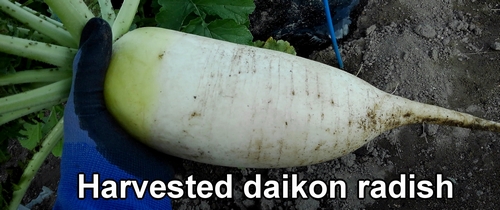
The harvested japanese daikon radish was about 20cm (8 in) long. Compared to the ones often seen in the supermarket, it is a little shorter.

Harvesting daikon radish with leaves is something special about home gardening. Normally, daikon leaves can be eaten, but this year, there were too many aphids, so I gave up on the leaves. (I tried washing the leaves in a bucket of water to remove the aphids, but they didn’t come off at all.)
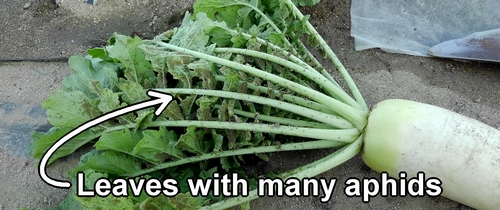
This year’s daikon started from seeding time, went through three thinning stages, and finally reached harvest time. I harvested one daikon today, and three are left. If I harvest them all at once, I can’t eat them in time. So, I will harvest the rest one by one while checking their condition.
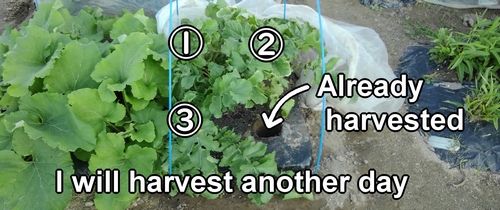
Related information on daikon radish cultivation(Frequently Asked Questions for growing japanese daikon radish)
When is the thinning time for daikon radishes?
Thinning daikon radishes starts when the seeds sprout and the cotyledons open. For “autumn daikon", which is sown from late August to early September, thinning begins about a week later when the cotyledons are fully grown.
Daikon radish seeds are planted 4 to 5 seeds in one spot, and the plants grow bigger as you thin them out. Usually, you need to thin them about 3 times. When the daikon radish plants get bigger and the leaves start to crowd, thin them out one by one.
How do you thin daikon radishes?
Since daikon radishes grow thick roots, it is important to thin them without damaging the roots. If you pull them out by hand, you might hurt the roots of the plants you want to keep, so use scissors for thinning. Cutting the base of the daikon with scissors will keep the roots of the remaining plants safe.
What should I do with the thinned daikon radish seedlings?
Thinning daikon radish is done early in the growing stage, so the thinned seedlings are small, but they can be eaten as harvested vegetables. They taste good in miso soup or stir-fried dishes.
What happens if you don’t thin daikon radishes?
If you grow daikon radishes without thinning, the plants will become crowded, which makes airflow poor and increases the risk of pests and diseases. The roots will also grow too close together, so they won’t be able to get thick. If you want to harvest long, thick daikon radishes, it’s better to thin them as they grow.
Following is the video for how-to. English subtitles are available.
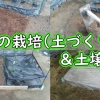

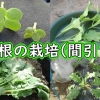
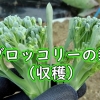




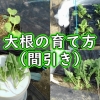



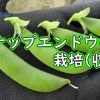
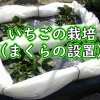
ディスカッション
コメント一覧
まだ、コメントがありません